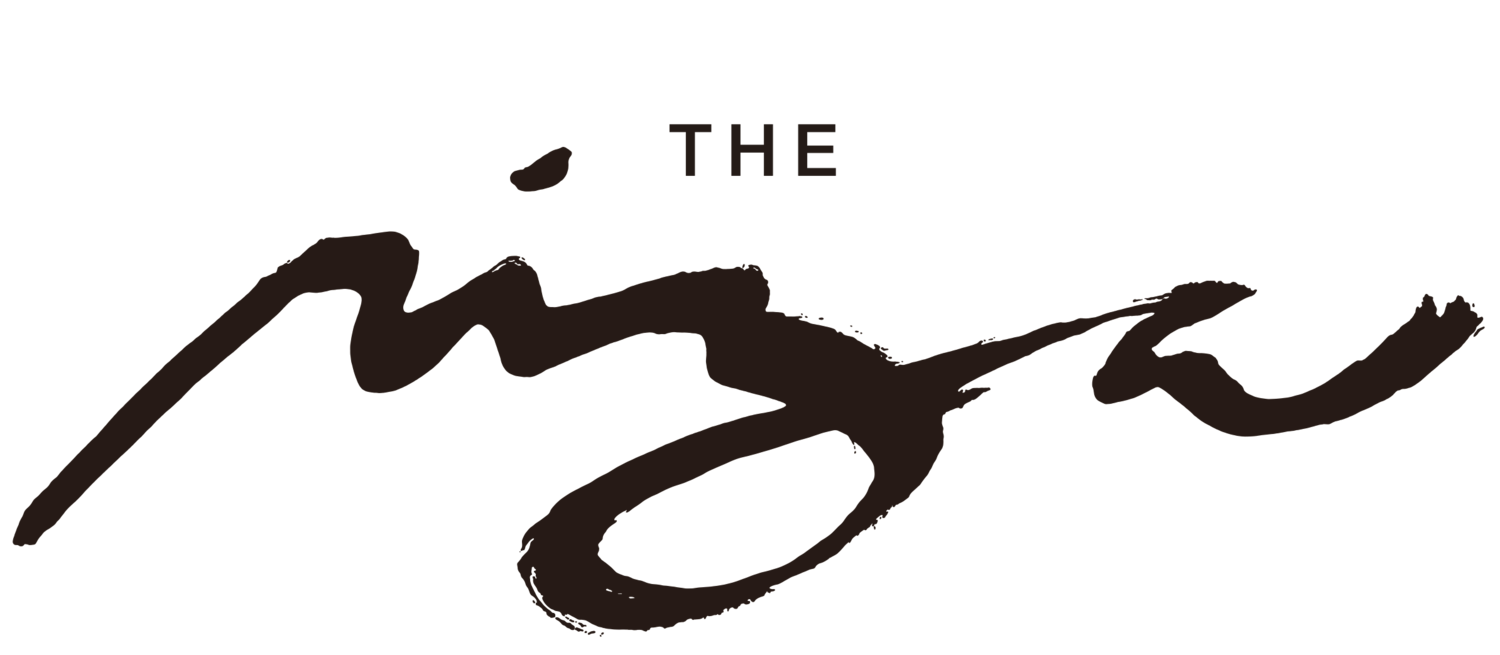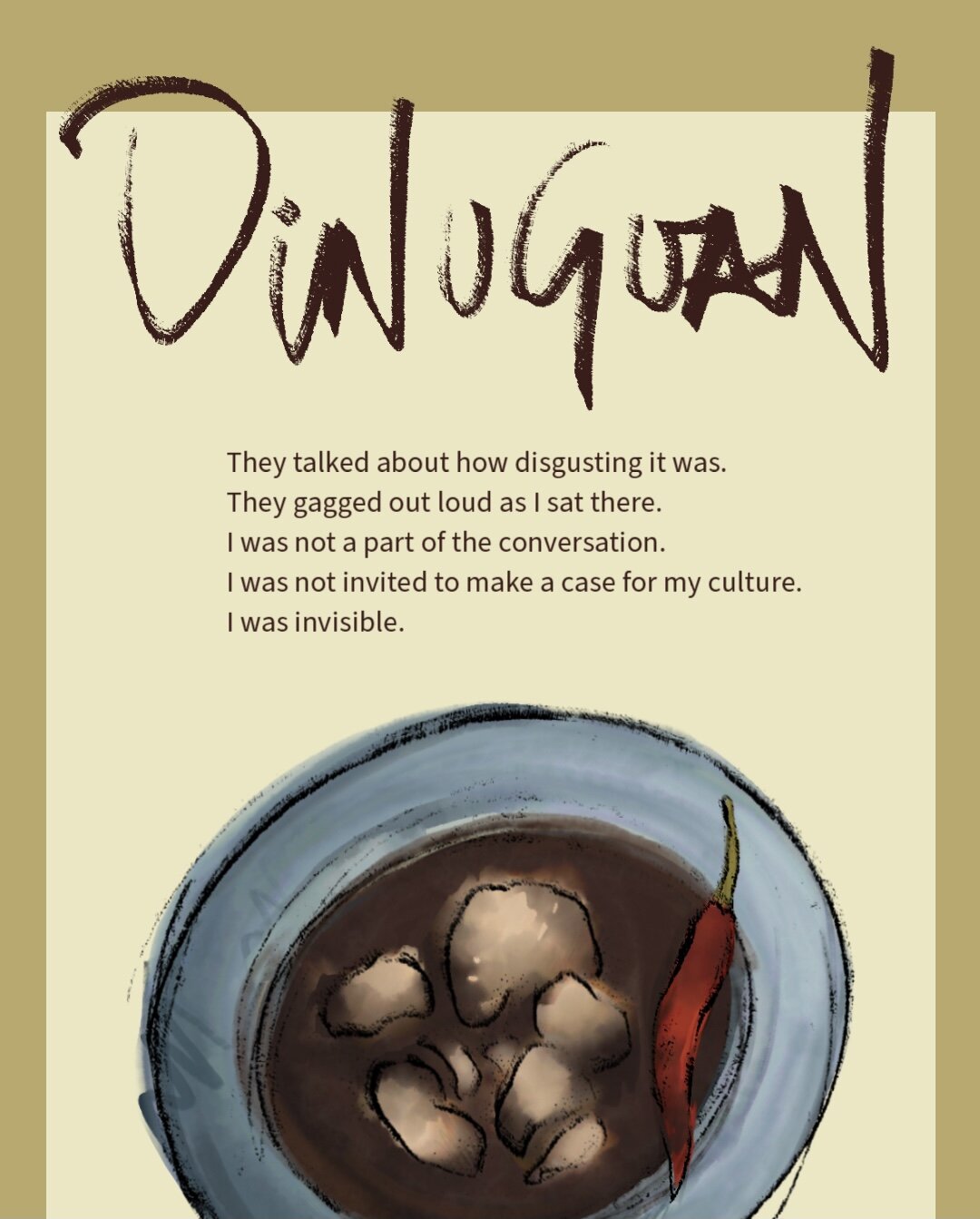Dinuguan: A Story of Ethnocentrism
Dinuguan is a creamy sour stew made of beef blood. It’s probably off-putting to hear creamy and blood in describing a stew, but like I’ve told my friends who have dared to try it, just don’t think about the base of the stew being beef blood. Easy peasy! Not convinced? Let me put it in this context: rare steak with a pat of butter vs. cooked blood stew that’s seasoned with the Asian spice holy trinity (onion, garlic, and ginger), pepper, red chillies, and sugarcane vinegar to keep the blood from clotting. All I’m saying is at least the blood is cooked and with the most tender pork and served atop warm rice (or with puto).
It’s comfort food and it’s the dish I enjoyed showing off to my friends cause I wanted to see them squirm and then challenge their bravery. I would invite a boy I liked to my Filipino family’s parties and if he was willing to try dinuguan, my family and I knew he was a keeper. It was a good challenge and a challenge that Jordan passed.
I was raised to be adventurous when trying food. I imagine my parents using this “be brave” tactic to keep me from becoming a picky eater. If that was their intention I respect it and it worked! Eating dinuguan (and fish head, bone marrow, and bulot . . . okay that’s where my bravery failed) was a badge of Filipino honor, so I was very proud of this dish. We can discuss another time if this is a good way to instill values into children (ah, and in saying that I’m trying to make myself palatable to my Western thinking audience and I’ll just leave this here so you can see how someone like me constantly navigates having to live in two worlds), but how else were my parents supposed to teach us our culture in an unknown land, with customs unfamiliar to them, and with no representation of our people? My parents didn’t know what PB+J sandwiches and Mac and Cheese were, so eating Filipino food wasn’t just for the sustenance of our bodies, but for the survival of our culture.
So when I was in college and my “show off Filipino food” tactic didn’t work with a friend (probably in part because I invented this game as a child and it didn’t age well into adulthood), I was humiliated and not because my game didn’t work. I knew how to use Filipino food to determine if a guy would be a good boyfriend, but I never thought to use it to determine if a person would be a good friend, hell even a decent human being! In actuality, my little game did work, I had just never had anyone fail it until now.
I was sitting in class next to my friend. We had been friends for a couple of years now and I had always felt comfortable being Filipino with her. So how she dragged me about how disgusting dinuguan was shocked me and ultimately hurt. It started off with her teasing me about how gross eating blood soup was. I didn’t mind. Our friendship often involved teasing each other about random quirks. I thought she’d let up, but she didn’t. Instead, she turned to a classmate sitting next to her and told her about dinuguan. This classmate did not know me, but together they talked about how disgusting it was. They gagged out loud as I sat there. I was not a part of the conversation. I was not invited to make a case for myself and my culture. I was invisible.
Our food is tied to our sense of being. It’s a part of our identity. How could it not be? Everything I understood about Filipino culture and about my identity as a Filipino was taught to me through food. My parents told me stories of their childhood and the land they missed when we gathered at the table eating rice and ulam (a main dish of meat and vegetables). Their stories, of course, involved food. When you go to a Filipino party the introduction to food is just as long as the introduction of each family member, but there’s probably a little more excitement in talking about the food then our cousin’s cousin and how we’re all related. When our food is called disgusting it feels like an attack to who we are and an attack on our culture. When a Filipino offers you food, in a way we’re inviting you to get to know us. You don’t have to like our food, but you at least got to give us a chance. And sometimes giving us a chance means just listening before you judge. Like my Tatay taught me (probably while we were sharing a meal and I had made a face when he was giving me a bite of Filipino food), “Never say anything is disgusting because there is someone else who likes that food.” And he wasn’t just saying that about Filipino food.
If you’re interested in making dinuguan and other Filipino recipes, I recommend Nicole Ponseca and Miguel Trinidad’s cookbook, I Am A Filipino and This is How We Cook.
To see other examples of ethnocentrism and food, see my illustrated post on Chinese food and sushi on my Instagram.


